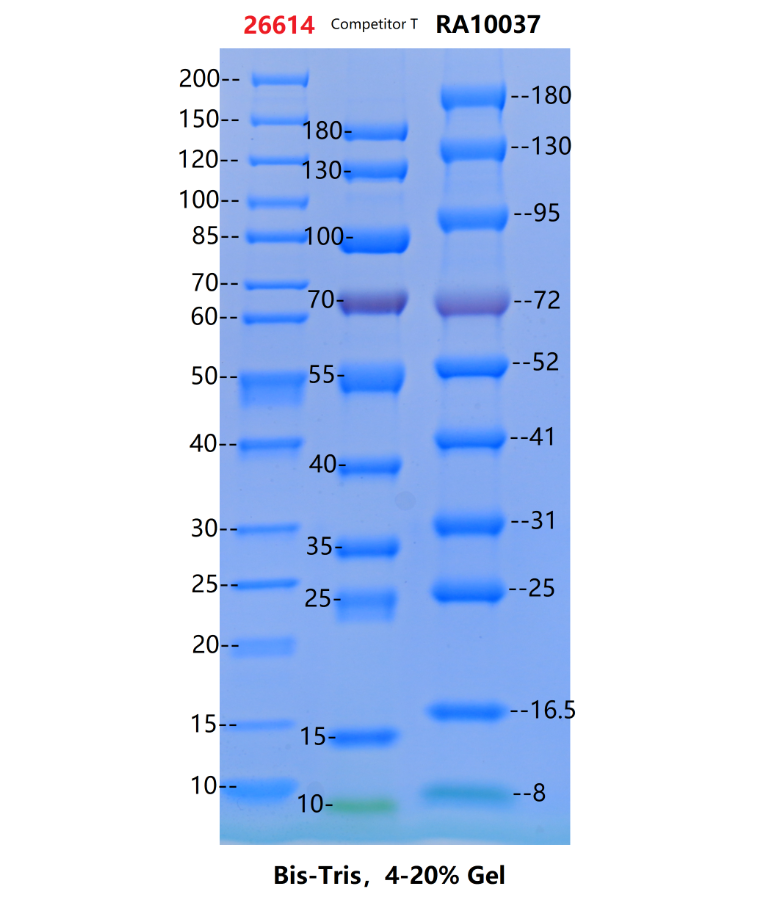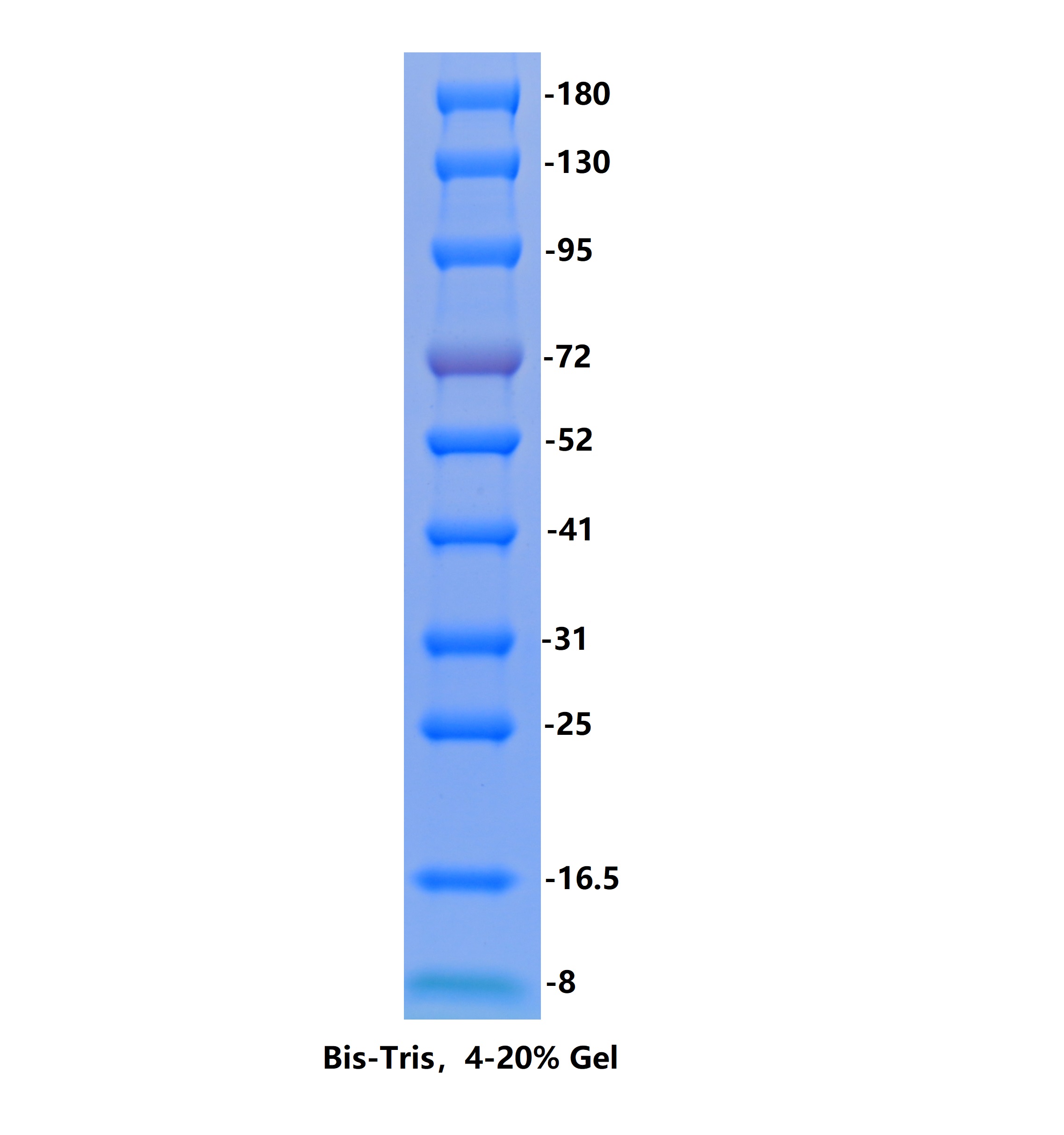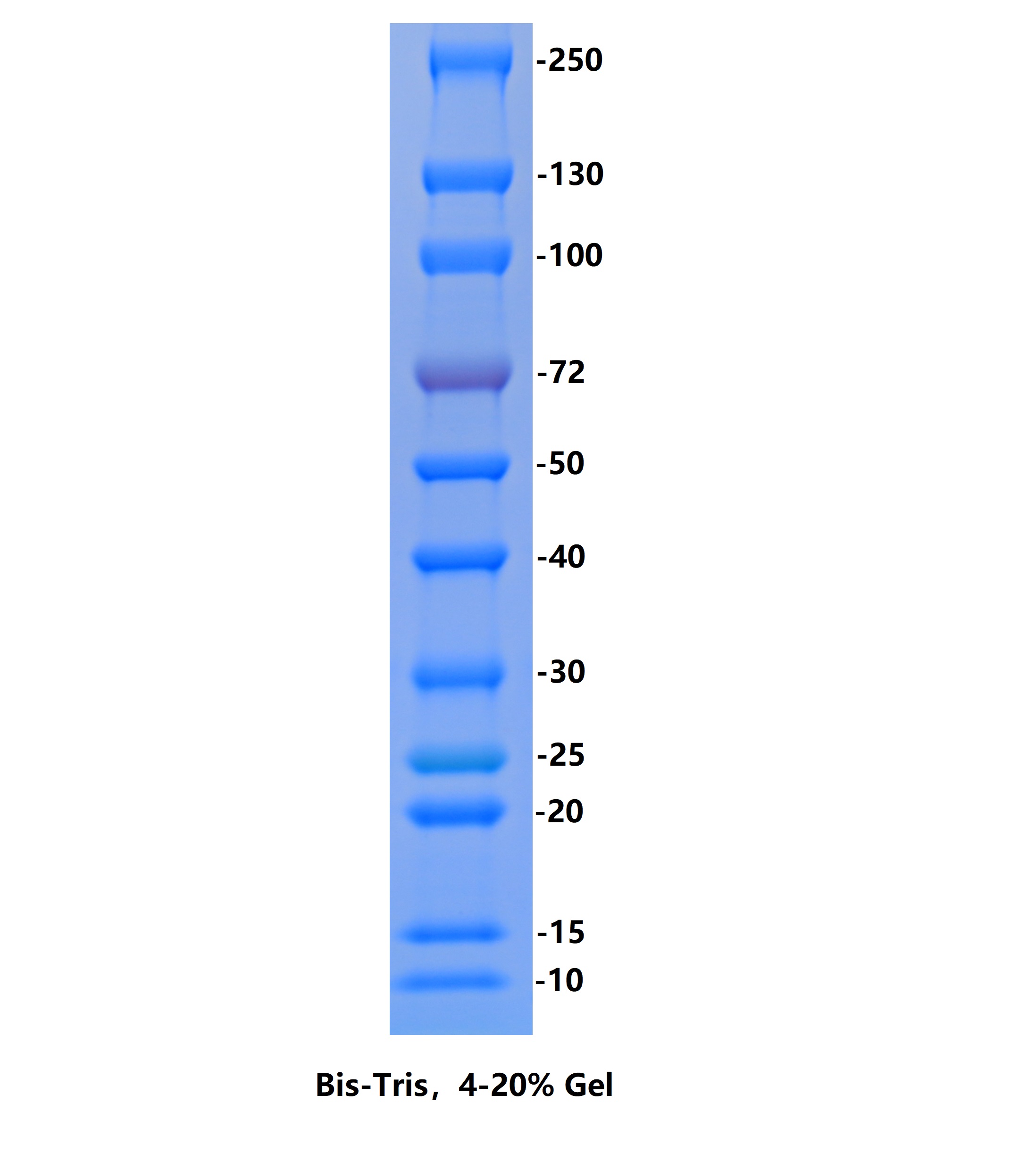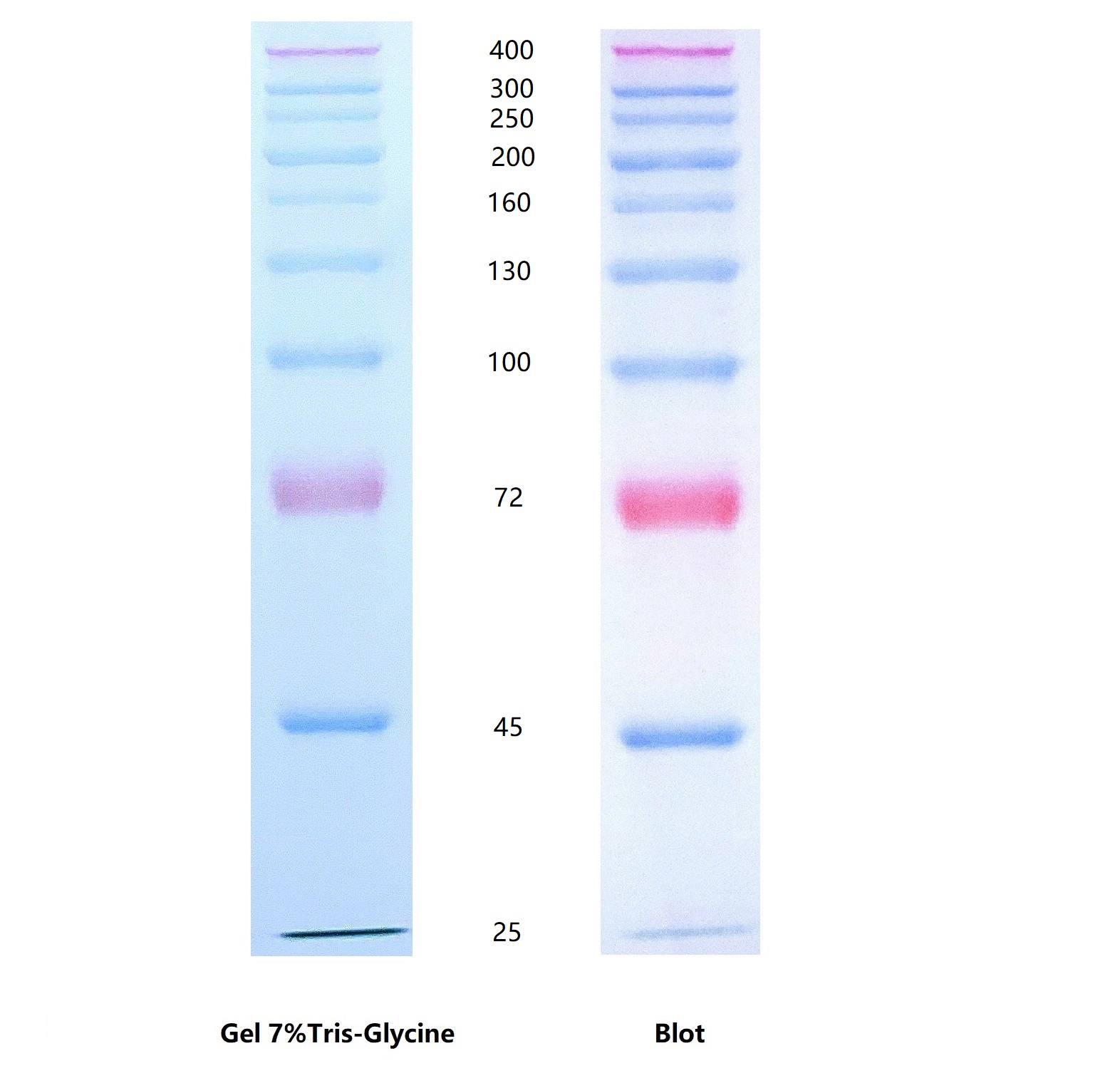Product Overview
This product is a high-purity recombinant color prestained protein marker specifically designed for research experiments. Through scientific proportioning of 10 precise molecular weight proteins (8, 16.5, 25, 31, 41, 52, 72, 95, 130, 180kDa), it addresses the core pain points of traditional prestained markers—"low accuracy and poor stability"—providing key support for improved experimental efficiency:
✅ Color differentiation design: 72kDa (orange-red), 8kDa (green), others (blue), allowing real-time observation without staining, no need to pause electrophoresis to judge progress, quick confirmation of transfer efficiency after membrane transfer
✅ Authoritative calibration guarantee: Calibrated with imported brand non-prestained marker standards, molecular weight deviation is far below industry average, accuracy comparable to non-prestained markers
- Pre-mixed 1× SDS-PAGE loading buffer, no boiling required
- Broad molecular weight coverage: 8-180kDa covers commonly used protein molecular weight ranges in research
- Clear band performance: 3-5μL loading volume produces sharp bands, no diffusion or trailing after electrophoresis
Product Specifications & Storage
| Product Name | Storage Condition | Specification 1 (100μL) | Specification 2 (250μL×2) | Specification 3 (250μL×10) |
|---|---|---|---|---|
| Calibrated Color Prestained Protein Marker (8-180kDa) | Store sealed at -20℃ | Suitable for small batch pre-experiments (approx. 20-30 uses) | Suitable for regular laboratories (approx. 100-150 uses) | Suitable for large laboratories/high-throughput experiments (approx. 500-800 uses) |
| Short-term storage at 4℃ (≤2 months) |
Shelf life note: 2-year validity when stored at -20℃, no performance degradation within 2 months at 4℃; recommended to aliquot upon first use to avoid repeated freeze-thaw cycles affecting stability
Four Core Advantages: Redefining Prestained Marker Standards
1. Molecular Weight Accuracy: Comprehensive Leadership Over Domestic and International Counterparts
Comparison with international mainstream brands (key molecular weight node deviations referenced to 26614):
| Molecular Weight Node | This Product Deviation | International T Brand Deviation |
|---|---|---|
| 180kDa | <2% | 17.2%(180→149kDa) |
| 95kDa&100kDa | <2% | 15%(100→85kDa) |
| 72kDa&70kDa | 9.7%(72→65kDa) | 7.1%(70→65kDa) |
| 52kDa&55kDa | <2%(52kDa) | 9.1%(55→50kDa) |
| 31kDa&35kDa | <2%(31kDa) | 17.1%(35→29kDa) |

* In the core 25-130kDa range, this product's accuracy significantly surpasses international brands; while deviation at 72kDa is relatively large, all other bands outperform international brands.
2. Buffer System Compatibility: Stable Migration Across Scenarios
Validated across multiple systems including Tris-Glycine buffer (conventional SDS-PAGE system), Tris-Tricine buffer (small molecule protein separation system), and Bis-Tris buffer (high-resolution separation system), this product maintains stable migration in all systems
3. Extreme Condition Stability: Handling Complex Experimental Environments
✅ Repeated freeze-thaw testing: 50 freeze-thaw cycles (-20℃→room temperature), no significant changes in band clarity or molecular weight migration, meeting laboratory scenarios requiring "frequent access"
✅ High temperature stability testing: 7 days at 40℃ simulating transportation environment, no protein degradation or aggregation, band integrity maintained well, addressing "summer transportation deterioration" concerns
✅ Room temperature storage testing: 30 days at 25℃ room temperature, no observed band changes, short-term forgetting to return to refrigerator does not affect use
4. Operational Convenience: Cost-Reducing, Efficiency-Enhancing Research Assistant
- No boiling required: Avoids traditional marker "boiling denaturation" step, reduces protein loss, and lowers operational risks
- No dilution required: Pre-mixed 1× loading buffer, ready for direct loading, easy for beginners to use quickly
Experimental Scenario Value: Solving Practical Research Pain Points
Traditional pain point: After electrophoresis completion, staining→destaining (approx. 2 hours) required to observe bands; if separation is poor, experiment needs repeating, wasting time and effort.
This Product Solution:
- Real-time observation of band separation during electrophoresis allows early judgment of whether voltage/time adjustments are needed, avoiding ineffective experiments
- Quick location of target protein gel area via color reference (e.g., 72kDa orange-red band), avoiding blind gel cutting and sample waste
Traditional pain point: After membrane transfer, "Ponceau S staining" required to confirm transfer efficiency (easily destained, affects subsequent incubation), or direct antibody incubation (if transfer fails, wasting antibodies and 1-2 days).
This Product Solution:
- Immediate observation of colored bands after transfer, intuitive confirmation of transfer efficiency (e.g., whether 130kDa large molecules transferred successfully), no Ponceau S staining needed
- Early exclusion of "insufficient/excessive transfer" issues, avoiding antibody and time cost waste
- After antibody incubation, marker band positions calibrate target protein molecular weight, improving result accuracy
Instructions & Precautions
Instructions for Use
- Remove product from -20℃ freezer, place in 4℃ refrigerator (10-20 minutes) or room temperature (5-8 minutes) for natural thawing, strictly avoid water bath heating or boiling;
- After thawing, gently mix (recommend centrifugation at 4000-8000rpm for 30s before mixing);
- Aspirate 3-5μL, slowly add to gel loading well, adjust loading volume appropriately according to gel properties and experimental habits;
- Return unused marker to -20℃, recommend aliquoting into 10-50μL/tube to minimize repeated freeze-thaw cycles.
Precautions
- This product already contains loading buffer, do not heat or boil;
- To reduce marker degradation and contamination risks, recommend aliquoting and storing at -20℃;
- For research use only.





